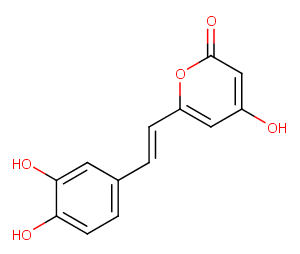Powder: -20°C for 3 years | In solvent: -80°C for 1 year


Hispidin is a polyphenol originally, including antioxidant, anti-inflammatory, and cytoprotective properties

| Pack Size | Availability | Price/USD | Quantity |
|---|---|---|---|
| 1 mg | In stock | $ 96.00 | |
| 5 mg | In stock | $ 239.00 | |
| 10 mg | In stock | $ 396.00 | |
| 25 mg | In stock | $ 663.00 | |
| 50 mg | In stock | $ 929.00 | |
| 100 mg | In stock | $ 1,250.00 | |
| 1 mL * 10 mM (in DMSO) | In stock | $ 263.00 |


| Description | Hispidin is a polyphenol originally, including antioxidant, anti-inflammatory, and cytoprotective properties |
| In vitro | Hispidin from P. linteus exhibited quenching effects against DPPH radicals, superoxide radicals, and hydrogen peroxide in a dose-dependent manner. Intracellular reactive oxygen species scavenging activity of hispidin was approximately 55% at a concentration of 30 μM. In addition, hispidin was shown to inhibit hydrogen peroxide-induced apoptosis and increased insulin secretion in hydrogen peroxide-treated cells. These combined results indicate that hispidin may act as an antidiabetic and that this property occurs through preventing β-cells from the toxic action of reactive oxygen species in diabetes[1].Hispidin inhibits protein kinase C β (PKCβ ; IC50 = 2 μM) with no activity against alkaline phosphatase[2] |
| Molecular Weight | 246.22 |
| Formula | C13H10O5 |
| CAS No. | 555-55-5 |
Powder: -20°C for 3 years | In solvent: -80°C for 1 year
DMSO: 22.5 mg/mL (91.38 mM)
You can also refer to dose conversion for different animals. More
bottom
Please see Inhibitor Handling Instructions for more frequently ask questions. Topics include: how to prepare stock solutions, how to store products, and cautions on cell-based assays & animal experiments, etc.
Hispidin 555-55-5 Chromatin/Epigenetic Cytoskeletal Signaling Metabolism PKC Endogenous Metabolite inhibit anti-dementia anti-diabetic fungal properties Protein kinase C Inhibitor anti-oxidant anti-cancer metabolite inhibitor
